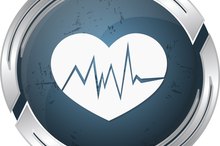What does fact checked mean?
At Healthfully, we strive to deliver objective content that is accurate and up-to-date. Our team periodically reviews articles in order to ensure content quality. The sources cited below consist of evidence from peer-reviewed journals, prominent medical organizations, academic associations, and government data.
- Mayo Clinic: Antihistamine (Oral Route, Parenteral Route, Rectal Route)
- Mayo Clinic: Antihistamines Side Effects
The information contained on this site is for informational purposes only, and should not be used as a substitute for the advice of a professional health care provider. Please check with the appropriate physician regarding health questions and concerns. Although we strive to deliver accurate and up-to-date information, no guarantee to that effect is made.
Anti-Inflammatory and Antihistamine Comparison
Anti-inflammatory drugs and antihistamines are drugs that can be obtained over-the-counter and by prescription. Both are used to ease signs and symptoms of ailments, however each drug has its own purpose.
If you are experiencing serious medical symptoms, seek emergency treatment immediately.
Anti-Inflammatory
Anti-inflammatory drugs, also known as NSAIDS (nonsteroidical anti-inflammatory drugs), are used for pain relief 2. Anti-inflammatory drugs block the effects of enzymes in the body that create prostaglandins, which are the main source of swelling and pain. When these enzymes are blocked, pain and swelling is reduced in the body.
Antihistamines
Antihistamines and Hypertension
Learn More
Antihistamines are generally used to relieve or prevent allergic symptoms and hay fever. The drug prevents the effects of histamine in the body which is produced in reaction to allergens. Some antihistamines are used to ease symptoms of motion sickness and to reduce stiffness and tremors in patients with Parkinson's disease. Because antihistamines can cause drowsiness they may be used to induce sleep in some patients.
- Antihistamines are generally used to relieve or prevent allergic symptoms and hay fever.
- Because antihistamines can cause drowsiness they may be used to induce sleep in some patients.
Side Effects
Anti-inflammatory drugs can cause ulcers, high blood pressure and allergic reactions when used frequently or in high doses. Antihistamines cause drowsiness in most cases, but have other side effects less common and should be examined by a doctor if they occur 3. Some serious side effects of antihistamines include:
- severe drowsiness
- troubled breathing
- dizziness
- fast or irregular heartbeat
- swelling of the face or tongue
- fever 3
Related Articles
References
- Mayo Clinic: Antihistamine (Oral Route, Parenteral Route, Rectal Route)
- WebMD: Pain Relief: How NSAIDs Work
- Mayo Clinic: Antihistamines Side Effects
- Ratliff JC, Barber JA, Palmese LB, Reutenauer EL, Tek C. Association of prescription H1 antihistamine use with obesity: results from the National Health and Nutrition Examination Survey. Obesity (Silver Spring). 2010;18(12):2398-400. doi:10.1038/oby.2010.176
- Couluris M, Mayer J, Freyer D, Sandler E, Xu P, Krischer J. The effect of cyproheptadine hydrochloride (Periactin) and megestrol acetate (Megace) on weight in children with cancer/ treatment-related cachexia. J Pediatr Hematol Oncol. 2008 November; 30(11): 791-797. doi:10.1097/MPH.0b013e3181864a5e
Writer Bio
Megan Kelly started writing professionally in 2007 when she was published in the anthology, "Lit Kids: Mama Bird and the Electric Rabbit" through Mill City Press. She is also a submissions reviewer and grant writer for "Spout Press," an independent magazine in Minneapolis. Kelly is pursuing her Bachelor of Arts in English literature from the University of Minnesota.









